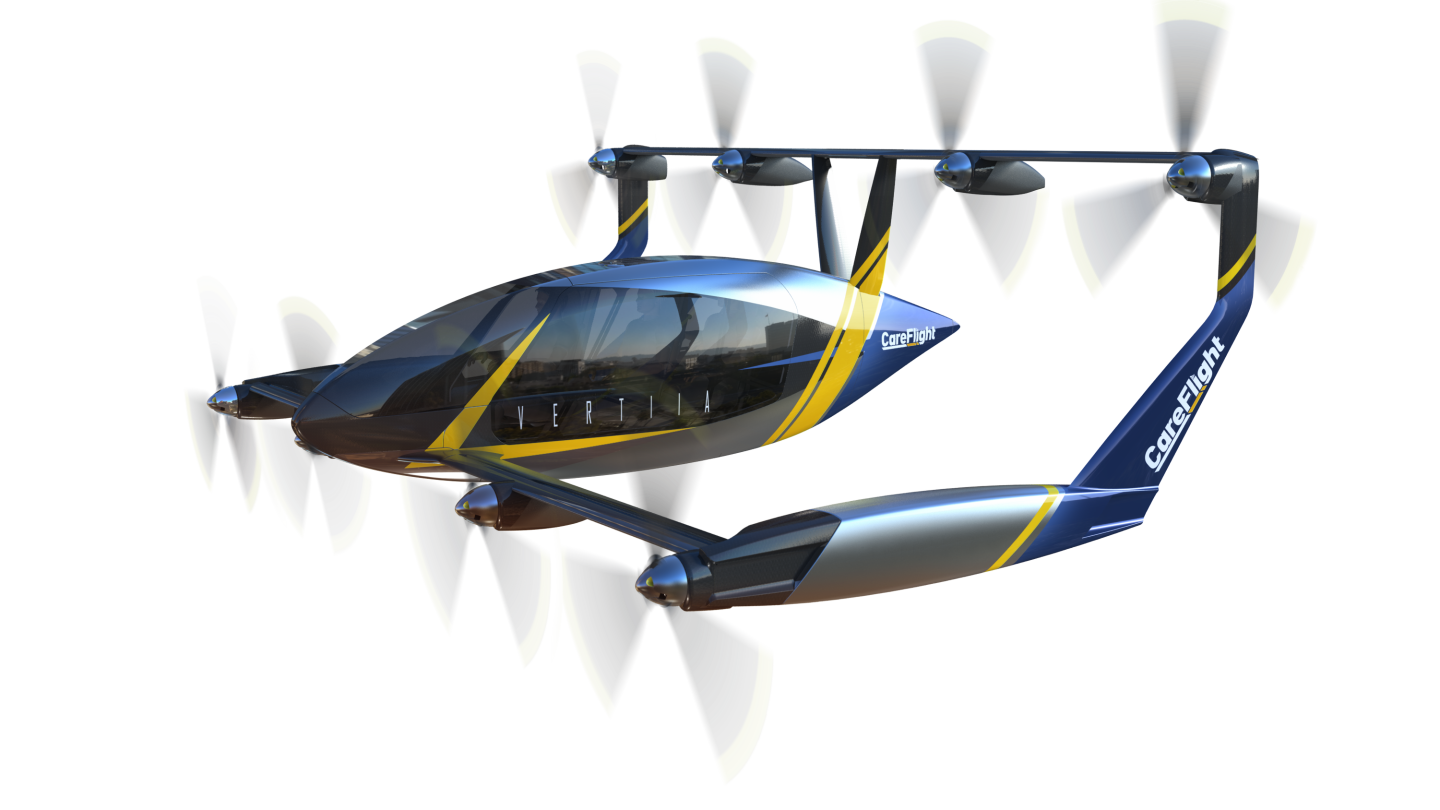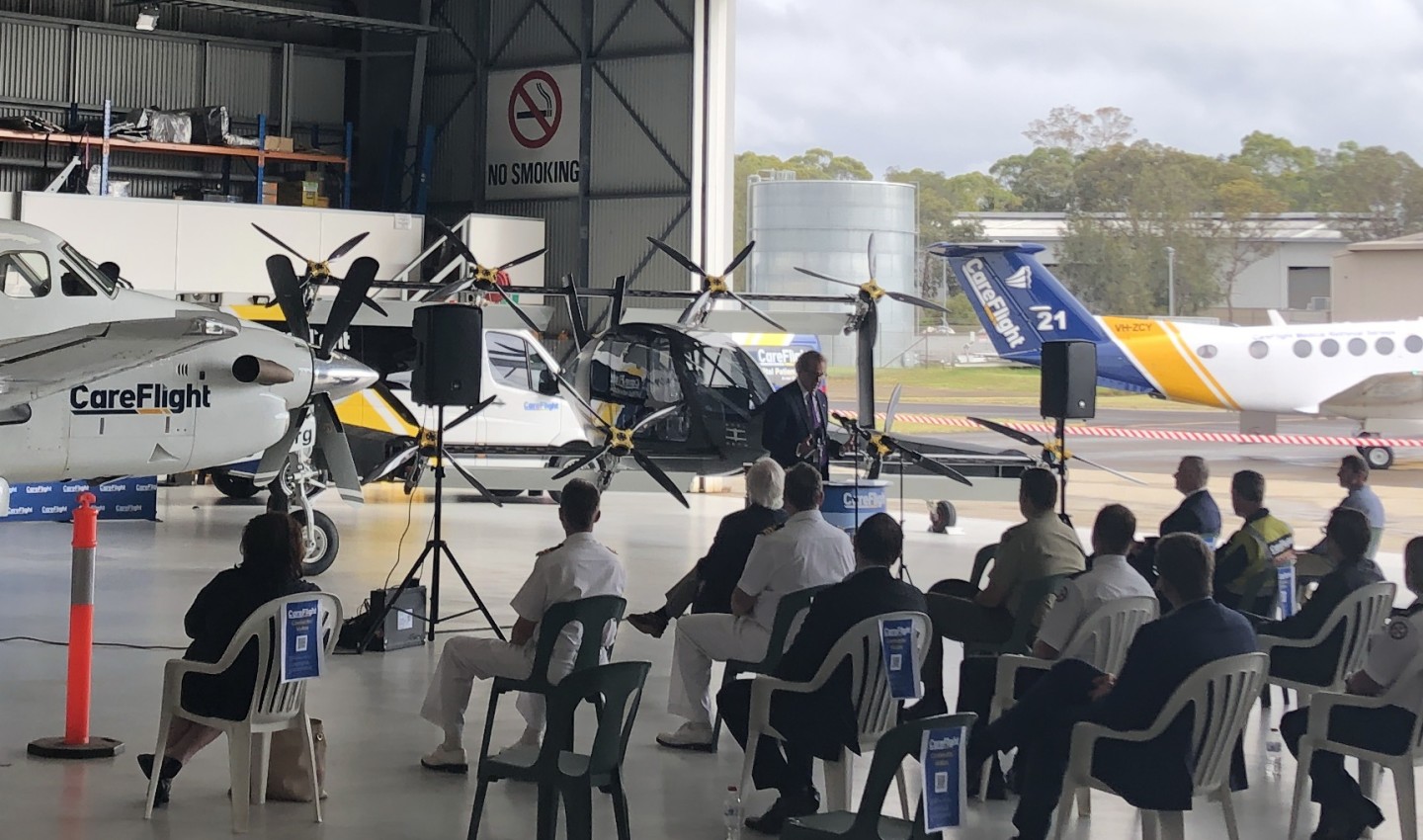An Australian company has popped out of stealth mode to reveal a new electric VTOL aircraft that is already at the pre-flight prototype stage. AMSL Aero’s Vertiia aircraft can fly up to 800 km (500 miles) on hydrogen, and it’ll start out as an air ambulance.
The Vertiia has been developed in conjunction with the University of Sydney and autonomy and sensor specialists Mission Systems. It’s a transitioning multirotor, with eight large props mounted on two wide carbon fiber poles extending from the upper tail and lower front of a slim, pod-shaped cabin. These props have the ability to tilt from pointing vertically upward for takeoff, hover and landing, to fully horizontal in cruise flight. Having eight of them provides a decent level of redundancy in case something fails.
Small wings are attached to the backsides of the props, tilting in unison with the props so they don’t block airflow, and once a certain speed is reached, this box wing configuration will allow efficient winged flight. AMSL says the aircraft is rated to cruise at around 300 km/h (186 mph) and it’ll be piloted on debut, but will have autonomous capabilities built in, ready to come online when such things become legal.

Vertiia
The company is making a big call, saying this will be “the most efficient eVTOL in the world,” perhaps due to its small, slim, tandem two- or three-seat cabin and lightweight carbon fiber architecture. We’re interested to learn more about this claim, and where else the Vertiia design team has managed to find efficiencies others have missed.
Range will differ depending on energy storage options; AMSL is working on figures around 250 km (155 miles) for a battery-powered version that’ll require long charges between flights, and 800 km (500 miles) on a hydrogen powertrain, which will also enable quick refueling anywhere you can get a hydrogen pump installed. The latter, at this stage, is still unproven technology, but once it’s up and running it should be a no-brainer for the entire eVTOL segment.
AMSL Aero has signed a partnership with CareFlight, an aeromedical company that wants to use these clean, convenient aircraft as air ambulances, serving remote communities that may not have access to local airstrips. With a full-size carbon airframe and tilt rotor system already built, it appears there’s still plenty of work to be done with energy storage, electronics and the like, but AMSL says it’s targeting 2023 as the date by which Careflight can start using it as an emergency vehicle.

AMSL Aero
This strikes us as very optimistic; none of the highly cashed-up eVTOL companies we’ve spoken to in Europe or North America sound like they’re particularly close to getting their aircraft certified yet. Indeed, the certification criteria themselves are still being nailed down according to Vertical Aerospace’s Tim Williams – and that’s in Europe, where the eVTOL sector is very active. Most companies are targeting 2024 or 2025 for the start of commercial operations, assuming they can pull together the enormous cash reserves required to get their aircraft certified. Perhaps AMSL Aero and CareFlight are looking at working under different regulations upon launch.
AMSL appears to have made impressive progress on the back of an AU$3 million (US$2.2 million) “Cooperative Research Centres Project” grant from the Australian government and a further AU$3 million investment from IP Group. Getting a full-scale prototype airframe built is no small achievement, and we look forward to speaking with the team and following its progress when flight tests begin at NSW’s Narromine Airport, some five and a half hours inland from Sydney.
Check out a video below, and there are more photos in the gallery.
AMSL Aero and CareFlight
Sources: AMSL Aero, CareFlight
Source of Article